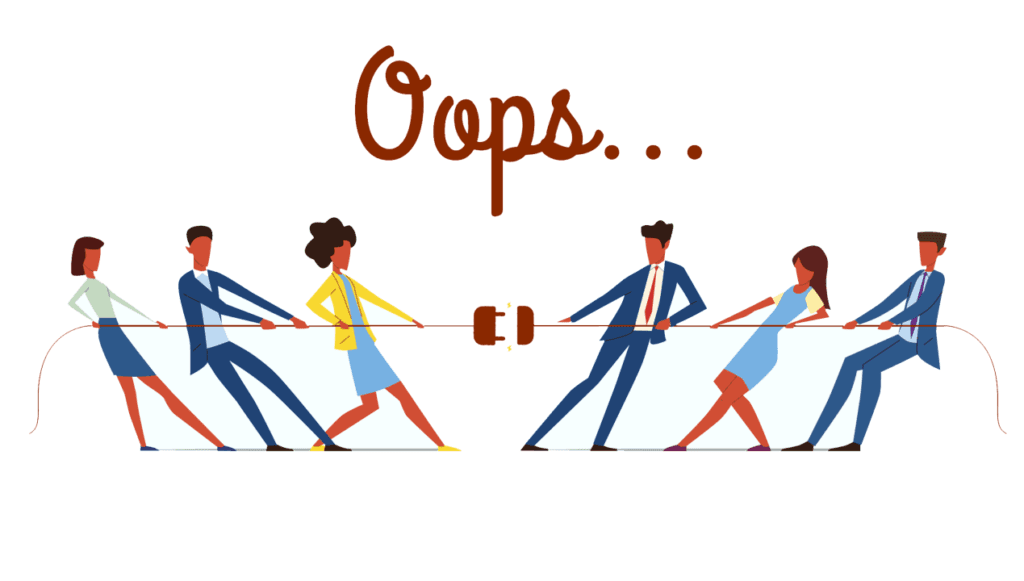Many organizations are running at full throttle—but in circles. Too often, firms pride themselves on how much is done, rather than whether the right things are done, or done well.
This confusion between effectiveness (doing the right things) and efficiency (doing things right) costs companies more than money—it drains strategy, culture, and credibility. If businesses are to thrive globally, they must mature from a hustle mindset to a performance culture. That journey begins with clarity.
True excellence lies at the intersection of two forces: ‘effectiveness and efficiency’. When these two align, institutions move from motion to momentum—from ticking boxes to transforming sectors. To compete globally, organizations must out-think before they out-run, they must first learn to aim—then fire.
Effectiveness is the strategic backbone of any high-impact organization. It’s about doing what matters most—aligning every action with a clearly defined purpose. For governments, that may mean investing in long-term industrialization rather than politically attractive short-term programs. For companies, it may mean focusing on customer lifetime value over one-time sales spikes.
Unfortunately, many leaders mistake activity for impact. A telecom firm may run multiple marketing campaigns, hire more agents, and launch new products—yet still lose market share because it hasn’t addressed core network quality issues. A ministry may host workshops and draft policies, but if implementation remains weak, nothing changes.
Effectiveness asks critical questions: Are we solving the right problem; are our goals clear, measurable, and connected to broader purpose; are we prioritizing initiatives that generate the most value—not just visibility?
Meanwhile, efficiency, on the other hand, is the ability to achieve maximum output with minimal input. It speaks to process discipline, time management, resource optimization, and cost control. In simpler terms, efficiency ensures that once you’ve chosen the right thing to do, you’re doing it in the best possible way.
In many institutions—public and private—efficiency remains a major bottleneck. Overlapping functions, bloated reporting lines, outdated manual systems, and poor time culture erode productivity.
In effect, effectiveness is about saying yes to the right goal and efficiency is about saying no to waste. Together, they form the twin engines of sustainable success.
A business that understands this distinction doesn’t just survive—it scales, inspires, and leads. For institutions across the globe, building effectiveness and efficiency into the DNA of leadership is a development imperative because every wasted resource, every delayed project, every unfocused initiative compounds the cost of poverty, inequality and underdevelopment.
To embed the effectiveness-efficiency mindset into an organization, leaders must:
Set Clear, Impact-Oriented Goals:
Goals must be tied to real outcomes, not vanity metrics. Instead of “increase social media presence,” say “increase customer conversion by 20% through targeted campaigns.”
Audit Time, Talent, and Tools
Where do your teams spend the most time? Who makes which decisions? What tools support execution? Efficiency improves when leaders examine the invisible systems that govern performance.
Link Strategy to Execution Tightly
Create bridges between strategy teams and implementation units. Every strategic decision should come with a defined roadmap, assigned owner, timeline, and measurable checkpoint.
Celebrate Results, Not Busyness
Organizations must stop glorifying overtime, late emails, and multitasking. Reward people who deliver results with clarity, and consistency.
Invest in Continuous Learning
Effectiveness and efficiency are not static—they evolve. Leaders must create learning organizations where feedback loops, innovation, and self-correction are baked into the culture.
Strategic Prioritization
“There is nothing so useless as doing efficiently that which should not be done at all.” — Peter Drucker
This quote strikes at the heart of why strategic prioritization is non-negotiable in today’s fast-paced corporate and public sectors. In the pursuit of productivity, some organizations excel at executing the wrong tasks.
Strategic prioritization is about more than making to-do lists—it’s about deciding what not to do. It requires leaders to separate the urgent from the important, and the loudest voices from the most impactful actions. In resource-constrained environments, this discipline can spell the difference between growth and stagnation.
Organizations that thrive are those that build cultures of intentionality. They align every initiative with mission, filter tasks through strategic objectives, and empower teams to focus on what truly moves the needle. When leaders as well as workers master strategic prioritization, they don’t just do things right—they do the right things, right on time. And that, in today’s world, is the ultimate competitive advantage.
Resource Optimization
In both the public and private sectors, the common reflex to underperformance is to request more: More funding! More staff! More offices! But when those requests are granted, performance doesn’t necessarily improve. Why? Because, inputs don’t always equal impact.
For instance, a government agency may receive increased allocations every year, but deliver no measurable improvement in service. A business may expand its fleet, yet still struggle with logistics delays due to poor route planning and maintenance. These are not resource gaps—they are optimization failures.
Instead of asking “What more do we need?” the real leadership question is: “What are we doing with what we already have?”
Resource optimization is not just cost-cutting—it’s value engineering. It asks: “How do we maximize results using what we already have?”
Just as financial audits assess money flow, resource audits track how people, tools, time, and capital are being used across the institution. Where are the bottlenecks? Where is there duplication? What can be restructured?
Stewardship
At the heart of optimization is a philosophical shift: leaders must stop seeing resources as entitlements, and start viewing them as trusts to be stewarded. This applies not just to public officials, but to private executives and NGO leaders as well.
Stewardship is the careful and responsible management of something entrusted to one’s care. So, for workplace stewardship, leaders have a responsibility to manage what gets done and how it gets done. It is not enough to achieve results alone; likewise, employees can do things perfectly, but, without results, businesses cannot survive. Creating that perfect balance, then, is the challenge.
Every resource—whether financial, human, or infrastructural—carries a cost. If it’s not being used to create value, then it’s being wasted.
Stewardship demands transparency, accountability, and strategic foresight.
When leaders embody this mindset, organizations become leaner, smarter, and more agile.
In the corporate world, stewardship means treating the company’s mission and resources as a trust and thinking beyond personal advancement to enterprise resilience.
In government and development spaces, stewardship means designing policies with intergenerational equity in mind and strengthening institutions. Without stewardship, patterns of leadership is wasted: Every new CEO or minister starts from scratch, leading to short-termism and mistrust.
Building Ethical Efficiency in the Race for Results
In today’s corporate and development landscape, teams are under pressure to scale fast, cut costs, launch first, and “move the needle” at record pace. Investors demand quarterly growth; citizens expect immediate service delivery; boards crave visible results.
But as the pace quickens, something often gets left behind—ethics.
Efficiency, once celebrated as a managerial virtue, now risks becoming a moral grey zone. From procurement irregularities in public projects to hasty product launches that ignore safety checks, the temptation to cut corners for short-term wins is real and rising.
This raises a crucial leadership question: Can we deliver results with speed and scale—without compromising on ethics, transparency, or integrity?
The answer must be yes. But only if we redesign how we define, pursue, and reward efficiency in the corporate and public space.
In the relentless drive for productivity, some organizations make a fatal trade: speed over scrutiny, profit over principle.
The fallout is costly:
- Reputational damage: One unethical shortcut can undo years of brand building.
- Legal penalties: Regulatory fines, lawsuits, and criminal charges often follow.
- Loss of trust: Internally and externally, ethical lapses break bonds that are hard to rebuild.
- Cultural erosion: When integrity is sacrificed, workplace morale and loyalty plummet.
In developing economies, several state-owned enterprises and procurement agencies have suffered similar fates, where pressure to execute fast, led to fraudulent contracts, ghost deliveries, or misallocated funds.
It’s time for leaders to adopt a holistic view of efficiency—one that measures not just how fast or cheaply something gets done, but also how responsibly.
True efficiency must answer three questions: Is it fast? (Timeliness and productivity); is it smart? (Optimal use of resources and systems); is it fair? (Aligned with ethical, legal, and social standards).
A truly efficient organization is not the one that launches the most projects or reports the highest margins, but the one that does so without cutting ethical corners, compromising safety, or ignoring compliance.
How do organizations pursue excellence without crossing ethical red lines? It starts with embedding ethics into the DNA of how work gets done—not as an afterthought, but as a design principle.
Clear Codes, Backed by Consequences: Every high-performing culture needs a well-defined code of ethics. But more importantly, it must be enforced. Make it clear: shortcuts, bribery, or compliance violations are not “savvy moves”—they’re deal breakers.
Tone from the Top: Ethical behavior must be modeled by leadership. When CEOs, Directors, or Ministers turn a blind eye to small infractions, they plant seeds for bigger breaches.
Set the tone: “We don’t win at any cost. We win the right way.”
Integrated Compliance Systems
Use automated procurement tools, audit dashboards, and whistleblower channels to prevent, detect, and respond to lapses quickly. Efficiency shouldn’t mean bypassing due process—it should mean building smarter, faster ethical systems. Contrary to myth, ethics and efficiency are not enemies. In fact, they reinforce each other when aligned well.
Ethical companies retain better talent: High-trust environments attract and keep high-performing individuals.
Transparency accelerates decisions: When processes are clear and fair, teams don’t waste time navigating internal politics or shady deals.
Compliance prevents costly backtracking: Doing things right the first time avoids legal or financial cleanups later.
Efficiency built on ethical foundations becomes sustainable and resilient.
Building organizational reflexes—through training, scenario planning, and open dialogue—prepares teams to choose integrity over expediency when it matters most. As governments digitalize, businesses scale, and public-private partnerships increase, ethical efficiency must become a non-negotiable.
Pursue the gold standard: Where delivery is fast, but processes are clean; where KPIs are met, but compliance is tight; where profit is earned, but integrity is preserved.
Because doing it right is part of doing it well. The world needs high-integrity institutions that deliver at scale without losing their soul.
Building a culture of both effectiveness and efficiency requires collective wisdom, shared priorities, and organizational alignment. The future belongs to institutions that pair vision with discipline, and ambition with execution. Don’t just move, move with purpose. Don’t just produce, produce what matters. In the end, true productivity is not about doing more—it’s about doing what matters most, well.









